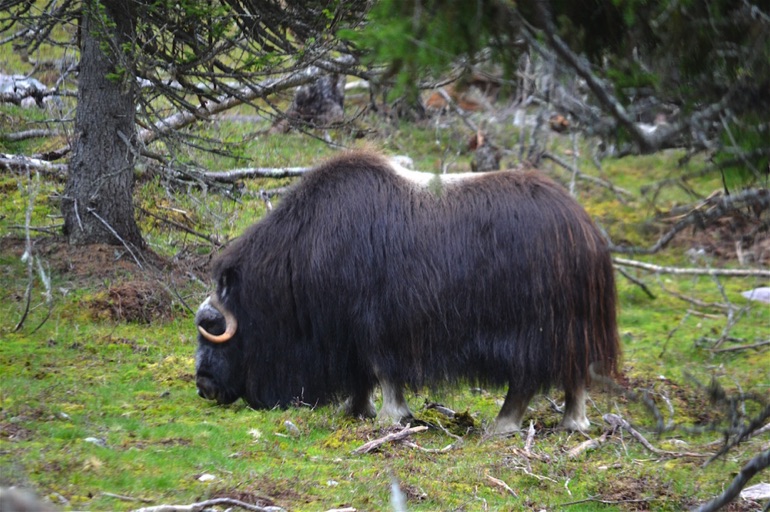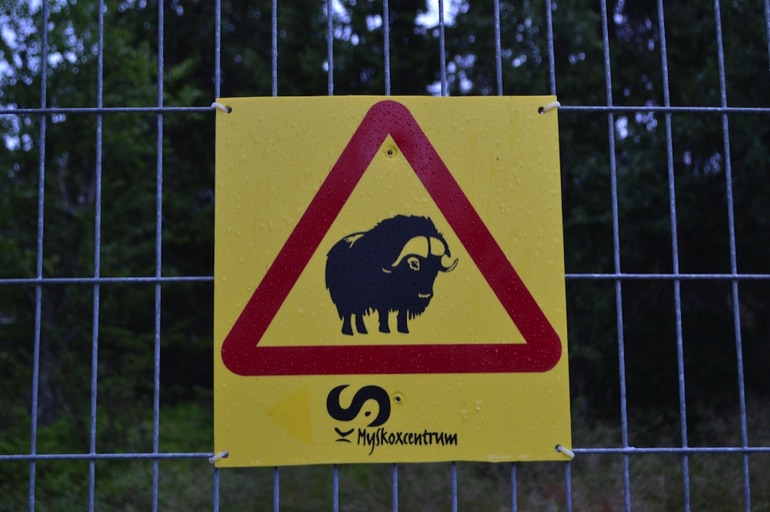The Musk ox is an Arctic animal well adapted to a tough climate. It is an enigmatic prehistoric animal worth protecting. Sweden’s group of wild Muskox are found in the mountains, west of the village Tännäs in Härjedalen, Sweden.
The Musk ox in Härjedalen are descendants of 5 individuals who immigrated from Dovrefjäll in Norway in 1971. During the 70’s and 80’s, the herd grew to 30-40 animals. From the late 80’s, the number has slowly decreased, due to disturbance from visitors coming too close together with other factors and today there are about 10 animals.
The Musk Ox is a Caprine Animal
The Musk Ox (Ovibos moschatus) has a short and sturdy body with a strong shoulder. The bull weighs 300-400 kg, is 2.5 meters long and about 1.45 meters in height. The cow can weigh 200-300 kg, is 2.3 meters tall and about 1.3 meters high. The animals are well suited for an Arctic climate and do not like summer temperatures exceeding +20 ° C. The Musk Ox can handle colds down to about -50 ° C and strong wind thanks to a thick grease layer and, above all, the thick coat. The coat, which is about 10 cm thick, has two layers, one undercoat and long hairs on top that can grow up to 70 cm long. The undercoat has ten times higher thermal insulation than sheep’s wool. Both cows and bulls bear horns.
The Musk Ox may seem as a mixture of a cow and a sheep, but they belong to the family of Caprine Animals and are more closely related to goats and sheep, not with cattle.
Social Animals
Musk Ox live in groups of five to thirty animals. They do not walk much more than a few kilometres a day in winter to save energy, while they pretty much move all around the clock in summer. The most dominant female, in the flock, is the leader who determines the direction in which animals will go during the day. The Musk Ox often have body contact with each other and on their own the whole flock can look like an animal with many heads.
Foods and Foes
Berry bushes and different kinds of grass are the basic foods in the winter and during the summer they eat Willow, Birch, Angelica and similar herbs growing among mountain birches.
The natural enemies of the animal are besides human beings, wolves. When they are threatened, they flock around the calves to protect them in the middle of the group. The adult individuals stand around with heads and horns pointing outwards. Their top speed is 30-50 km/h.
The Last Grand Prehistoric Animal
The Musk Ox is the last of the great prehistoric animals still roaming earth. The species originated in the high plateaus of Central Asia millions of years ago. During the last ice age there were Musk Ox all over Europe and North Asia. Finds of fossils show that they used to live side by side with Mammoths and wholly rhinoceros 30-64 000 years ago. When the last ice age was over and man inhabited the north the Muskox were an easy prey and the animals got extinct – due to intensive hunting.













